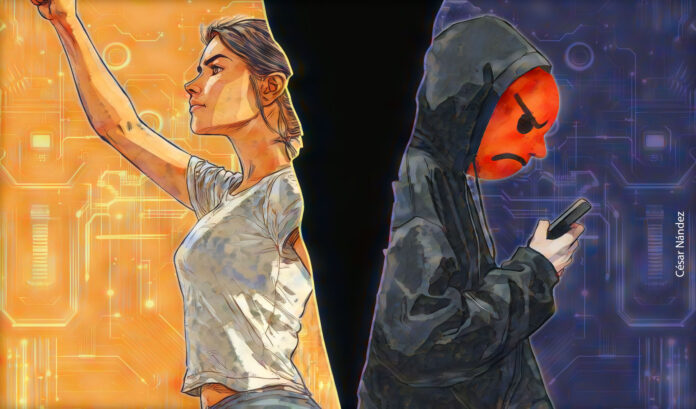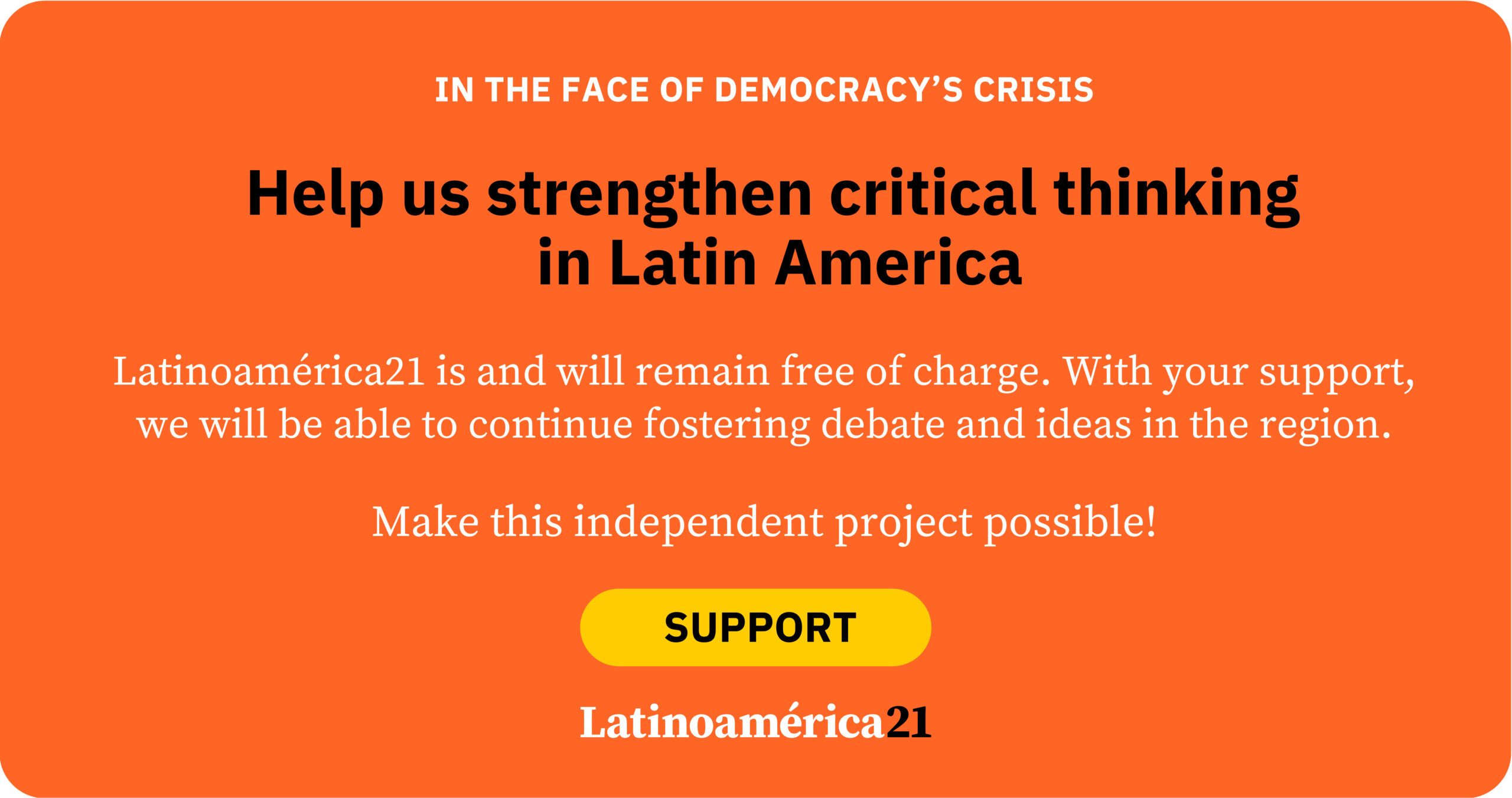
The more than 2 million people who attended Lady Gaga’s free concert on Copacabana Beach last Saturday (05/03) could never have imagined they would come close to experiencing a tragedy fueled by hate. As the sea of people waved their fans to the beat of the singer’s hits, in a celebration of diversity and empathy, the Civil Police of Rio de Janeiro prevented an attack involving Molotov cocktails and improvised bombs.
It was an attack organized by young users of digital platforms such as Discord, aimed at the LGBTQIA+ community and children. They described the plan as a “collective challenge” in pursuit of online notoriety. The episode, which could have ended in national mourning, serves as an urgent warning about the growth of hate networks among the youth and how platforms irresponsibly foster this radicalization.
There is something profoundly generational about this phenomenon. The Netflix series Adolescence broke viewership records by portraying, in raw terms, how young people live in hyperconnected environments, with no state or parental supervision, and marked by bullying, toxic masculinity, and the normalization of violence. It reflects not only what’s happening in Brazil, but across the globe. Gallup data shows we are facing an ideological gap between young men and women of Generation Z.
In Donald Trump’s United States, women aged 18 to 30 are now 30 percentage points more liberal than their male counterparts. In Germany, where a right-wing alliance triumphed in recent elections and the far-right AfD party is growing at an alarming rate, the gap is also 30 points. In Poland, although the far-right governed until the end of 2023 after eight years in power, nearly half of men aged 18 to 21 support such parties, compared to only one-sixth of women in the same age group.
Misogyny, Racism, and Transphobia
This polarization among youth is occurring precisely when networks like Discord, TikTok, and Reddit have become spaces for identity formation. However, instead of promoting diversity, many of these platforms operate as machines for producing and circulating hate. The study Mapping Discord’s Darkside, published in New Media & Society, reveals that despite marketing efforts to distance itself from the far right, Discord hosts thousands of servers associated with neo-Nazi, misogynistic, racist, transphobic, and conspiratorial discourse. A total of 2,741 servers with these characteristics were identified, with over 850,000 active members.
These networks effectively function as recruitment spaces for minors, where young people—especially boys—are drawn in by edgy memes, promises of belonging, and identity games based on excluding others. Discord’s structure, which prioritizes privacy and decentralization, has become the ideal breeding ground for the rise of these “toxic technocultures,” as researcher Adrienne Massanari defines them. Platforms like Disboard—an informal search engine for Discord servers—are used to recruit teenagers into communities that glorify Nazism, incite hatred against women and LGBTQIA+ individuals, and even offer “services” for coordinated attacks on other servers.
Part of the success of these radicalization environments stems from gamification: the use of game-like elements such as challenges, rewards, and rankings in non-gaming contexts. Applied to social media and extremist forums, gamification turns interaction into competition and hate speech into a playful challenge. This practice eases the path into extremism, masking violence behind seemingly harmless mechanics. As the report Gamification and Online Hate Speech points out, gamification becomes a powerful tool for normalizing and spreading hate, especially among young people seeking recognition and belonging.
This process, referred to as “bottom-up gamification,” occurs when users themselves create the rules, symbolic rewards, and challenges. For example, by turning hate speech into “challenges” that involve humiliating women or LGBTQIA+ people online, the group promotes the dehumanization of these individuals in a playful and viral manner.
Encouraging Violence as a ‘Challenge’
The investigation into the failed attack at Lady Gaga’s Copacabana concert revealed precisely this mechanism: the attack was treated as a “collective challenge,” with young people recruited to make Molotov cocktails and explosive backpacks in order to gain social media notoriety. Hate speech does not appear as the starting point but emerges as an internalized consequence of repeated playful interactions with violent content.
The logic of gamification also creates a structure of “achievements” and “scores” that encourages competition and reinforces radical ideology. As demonstrated in the 2022 study by Lakhani and Wiedlitzka, attacks like the one in Christchurch, New Zealand, were planned and executed with heavy inspiration from video games, including livestreams styled like “Let’s Play” videos and viewer comments treating the number of deaths as a “score.”
This aesthetic of violence acts as a bonding element among young men in digital spaces—especially those who already feel marginalized or frustrated—and who find in these hate-based games a form of belonging and validation. Thus, gamification transforms hate into entertainment, reinforcing ties within toxic communities and making it harder to recognize it as actual extremism.
We are therefore facing a double challenge: platform moderation and generational acceptance. The gender divide within Generation Z is no trivial matter. It reflects a gap between a generation of young women awakened by #MeToo and other feminist movements, who embrace progressive agendas, while their male counterparts, in reaction, are drawn into conservative and misogynistic discourse in digital environments.
This gap has real consequences for public debate, personal relationships, schools, and democracy in general. But it also reveals something that must be said bluntly: regulating platforms is not a technical issue—it is a matter of generational justice. A generation’s future cannot be built on algorithms that reward hate and radicalization.
We urgently need to move forward with platform regulation, but in an inclusive way—listening to young people, especially those from the peripheries and the most vulnerable communities, who are often silenced in public discourse. We need to discuss mechanisms that prevent platforms from being used for the mass recruitment of youth by extremist groups and that hold companies accountable for outsourcing moderation while fueling toxic ecosystems.
By ignoring the warning, we risk normalizing the idea that youth radicalization is just a side effect of the digital world. And that is unacceptable. As the series Adolescence reminds us, behind every screen is a young person searching for belonging, meaning, and a future. We cannot allow those searches to lead down the path of intolerance and hate.
Text originally published in The Conversation Brasil.
*Machine translation proofread by Janaína da Silva.



